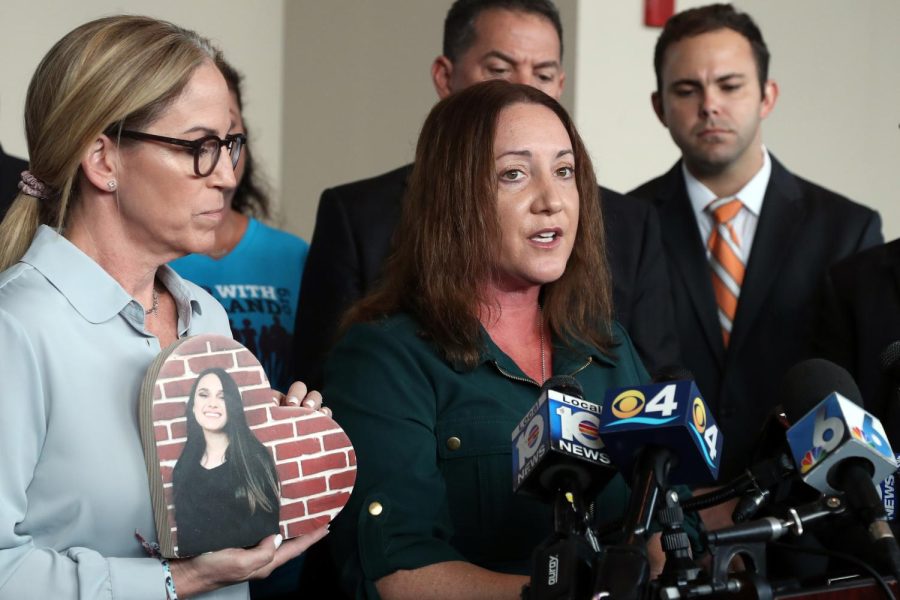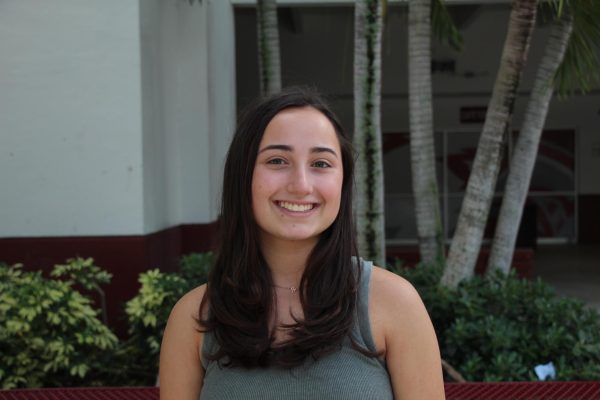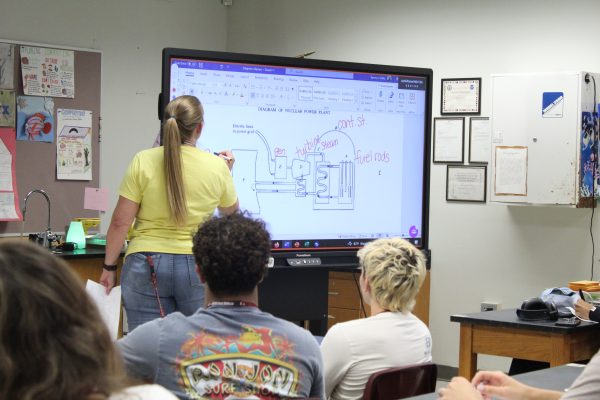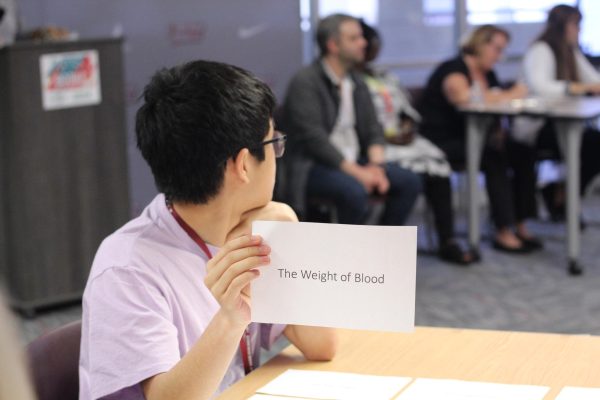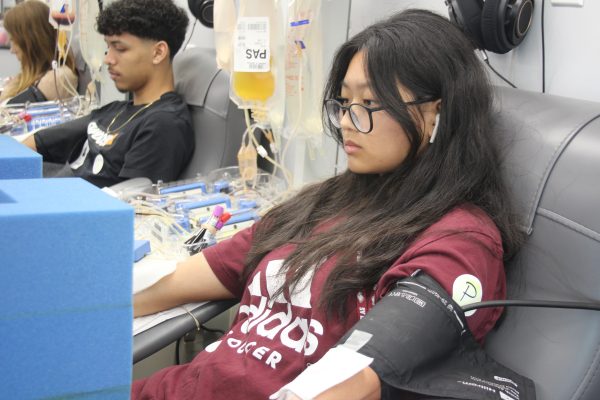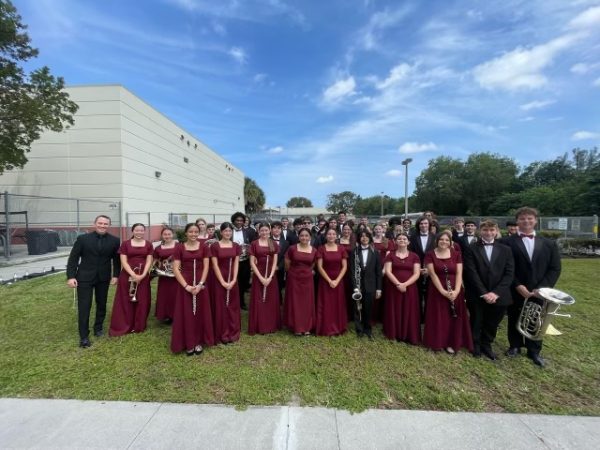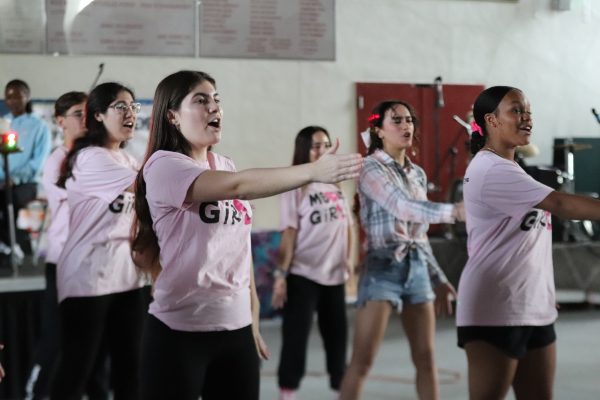BCPS uses SaferWatch app to comply with Alyssa’s Law
Tribune News Service
Lori Alhadeff, mother of Marjory Stoneman Douglas High School shooting victim Alyssa Alhadeff, advocates for a law that would require panic alarms be installed in Florida schools. Photo courtesy of Amy Beth Bennett/ South Florida Sun Sentinel/Tribune News Service
March 5, 2022
SaferWatch, a mobile app providing a panic button that travels with its users, is the latest effort to increase school safety after the shooting at Marjory Stoneman Douglas High School in 2018 that resulted in the death of 17 people and injury of 17 more. The app also allows users to submit information about safety-related concerns to the Broward Sheriff’s Office.
Broward County Public Schools began using SaferWatch for students, faculty and parents at the start of the 2018-2019 school year. SaferWatch added a panic button feature to be in compliance with Alyssa’s Law, or SB 70, which both the Florida House of Representatives and Senate passed unanimously. The law went into effect for this school year.
Alyssa’s Law, named after 14-year-old Alyssa Alhadeff who lost her life in the shooting at MSD, establishes that all public and charter elementary, middle and high school campuses must have a silent mobile panic alert system. The system is also known as “Alyssa’s Alert.”
The panic button feature of SaferWatch only works for BCPS staff members who have set up their accounts with their school email addresses and is only available for use when they are within the set geo-fence that surrounds a school campus.
SaferWatch follows a specific process when an incident is reported. Once reported, SaferWatch sends the user’s location, profile, medical information and emergency contacts to school administrators and law enforcement. After the report has been verified, a mass notification is sent out to nearby people in order to make people aware of the situation and provide important safety instructions.
SaferWatch has expanded from just education to hospitals, places of worship, government buildings, airports, neighborhoods and public venues.
Many people view SaferWatch as an important tool that could save lives, including School Board of Broward County member and Alyssa’s mother Lori Alhadeff, who lobbied for the passing of Alyssa’s Law.
“Creating a safer and more secure environment for our students, staff and visitors requires many layers of safety,” Alhadeff said. “SaferWatch provides one layer. Over the past few years, the school district has also increased security and mental health staffing, upgraded and added safety technology, strengthened relationships with local law enforcement, enhanced crisis communications plans and increased security at sporting events.”
BCPS hopes the layers of defense will save lives in emergency situations.
“I think any layer of defense can save lives,” English teacher Stacey Lippel said. “If somebody has penetrated the borders of our school, we’re resorting to SaferWatch. I think if I’m able to use the app and that can save a student in my class, then it’s worth it.”
BCPS faces criticism by educators on their roll out of the new SaferWatch app. All school staff attended an on-site training during pre-planning week regarding county safety policies and procedures, including SaferWatch. However, they did not have SaferWatch ready at the beginning of the school year for teachers to set up their account, which gives them access to the panic button. In addition, there have been no follow-up training sessions or reminders for staff about this life-saving tool.
“It’s an additional protection but, unfortunately, I forgot about it,” media specialist Diana Haneski said. “[…] Maybe it would be helpful if we can have some reminders. Someone like administration could remind us that this was a thing because this is the kind of thing that could help ease someone’s mind, and we’ve had a lot of stress these last few months coming up to [the fourth anniversary].”
However, not all school staff have downloaded and set up SaferWatch, which is optional for instructors under Alyssa’s Law. According to BCPS records, more than 6,000 BCPS staff members have set up the SaferWatch app; however, BCPS has roughly 30,500 employees. While 85% of administrators have the SaferWatch app, only 20% of school employees are using it. Some instructors cite privacy concerns as their reason for not downloading the app.
“The original concerns I had with SaferWatch, and I have spoken multiple times to the president of SaferWatch, were in the user agreement,” TV production teacher Eric Garner said. “The way they had written it made it appear to be like that at any time, they could access pictures on your phone, texts on your phone or things like that.”
SaferWatch has since rewritten the user agreement to eliminate many privacy concerns teachers had, but some concerns remain.
“To me, I like FortifyFL a lot better because [with] Fortify, you’re just sending information,” Garner said. “They can’t get [information] from your phone, whereas SaferWatch does that to a level, though it’s not anywhere near as intrusive as what it sounded like [in the original user agreement].”
In an anonymous survey, 48.7% of MSD teachers have downloaded and set up their SaferWatch account to use the mobile panic button, 38.5% have not downloaded or set up their SaferWatch account to use the mobile panic button, and 12.8% of MSD teachers have downloaded the app but have not set up their account to use the mobile panic button.
“I need several ways to report emergencies in the event one fails,” one teacher who downloaded and set up their SaferWatch account said in the survey.
Other teachers were in agreement, citing the possible benefit of increased communication abilities in a crisis and the feature where they would be notified about activity near them. However, not every teacher was enticed by these features.
“I don’t trust security apps not to bury programming on my device,” another teacher said. “I know most apps are tracking our non-app activity in one way or another, but apps that have clear links to law enforcement or my employer are ones [I‘d] rather not further invite onto my phone.”
Other teachers had not downloaded the app because they weren’t sure how to or did not even know that SaferWatch existed.
Four years after the tragedy at MSD, SaferWatch ignites hope among the MSD community in reducing potential deaths and injuries as well as working to save lives in emergency situations.
This story was originally published in the March 2022 Eagle Eye print edition.

